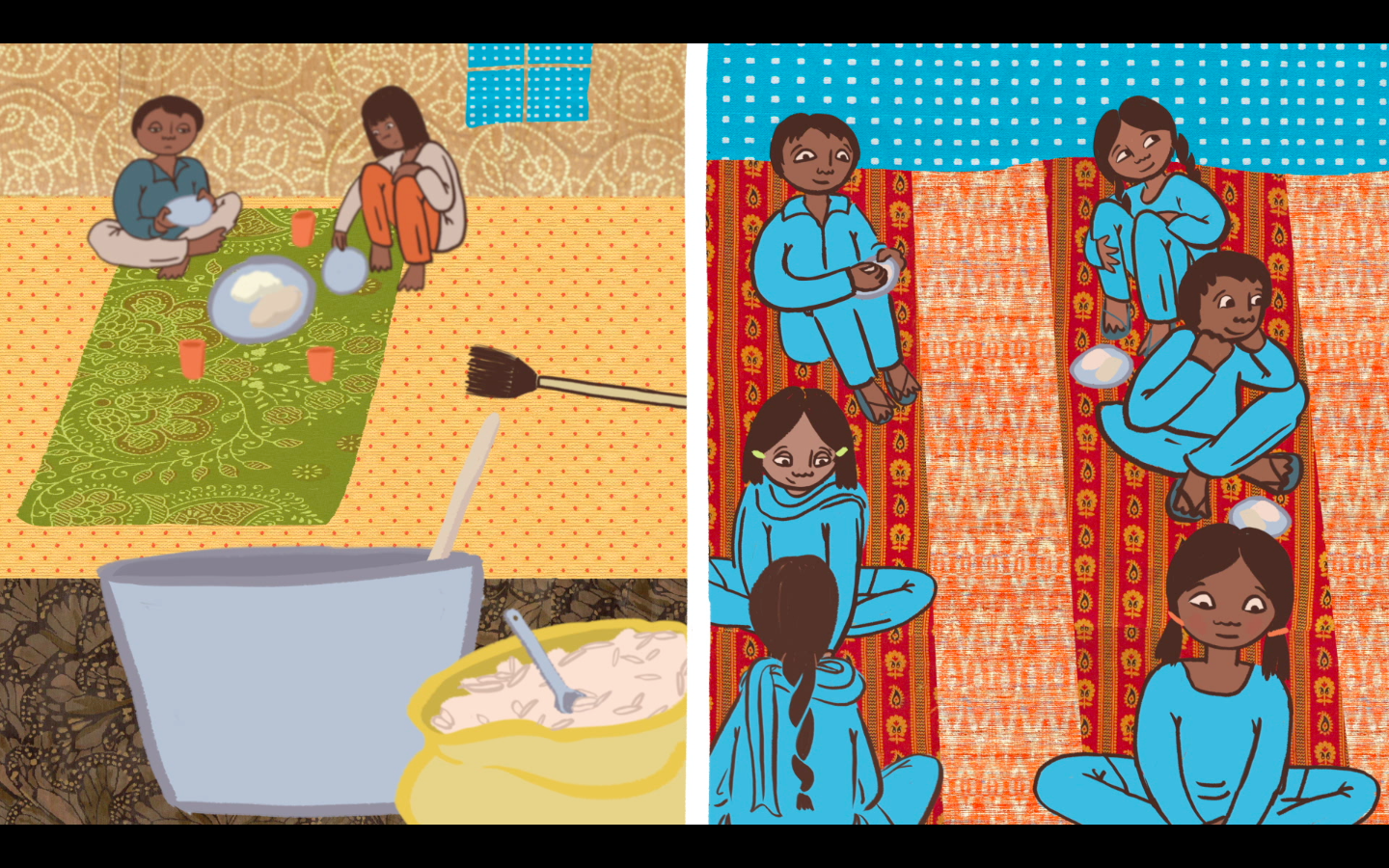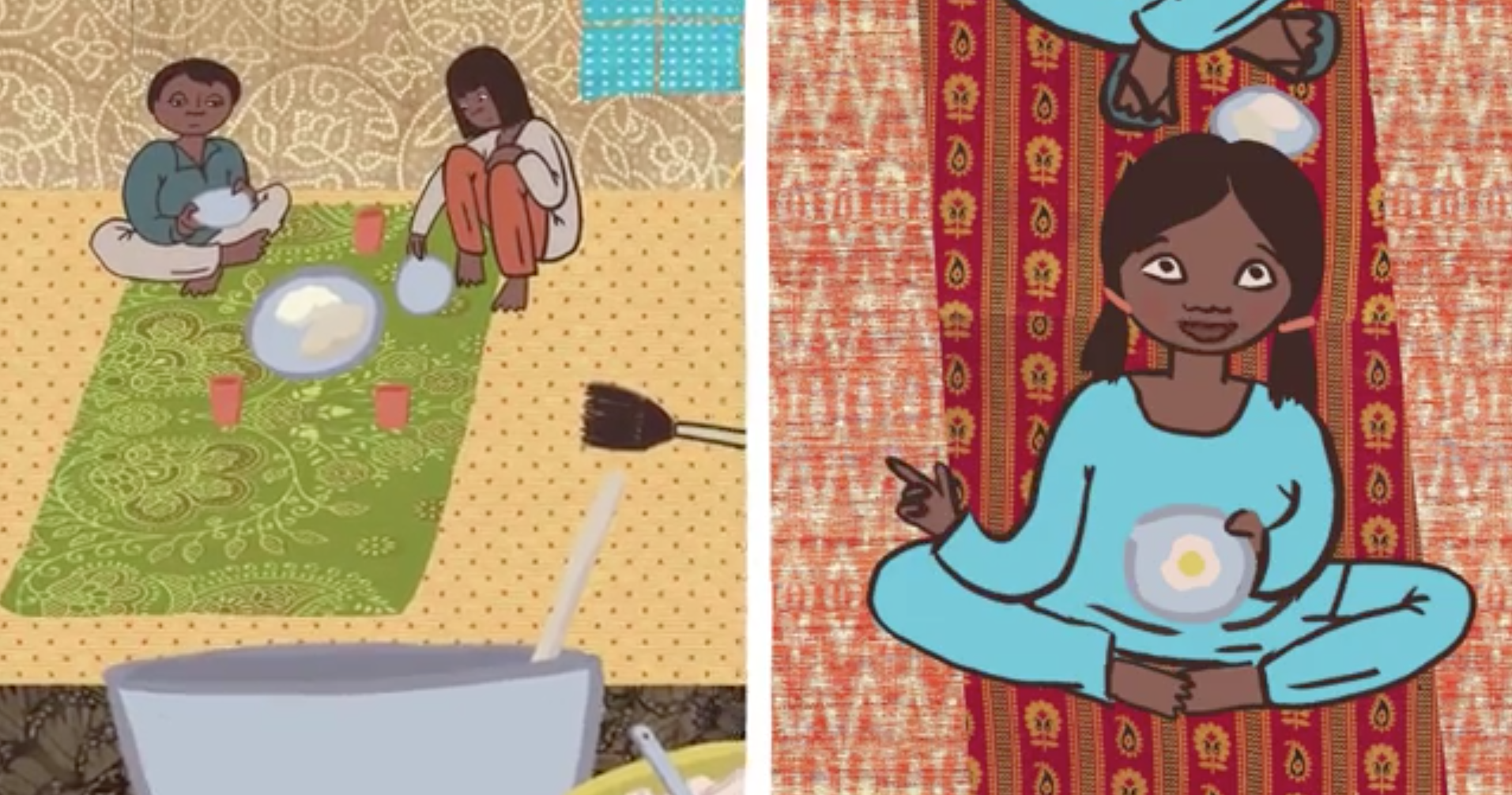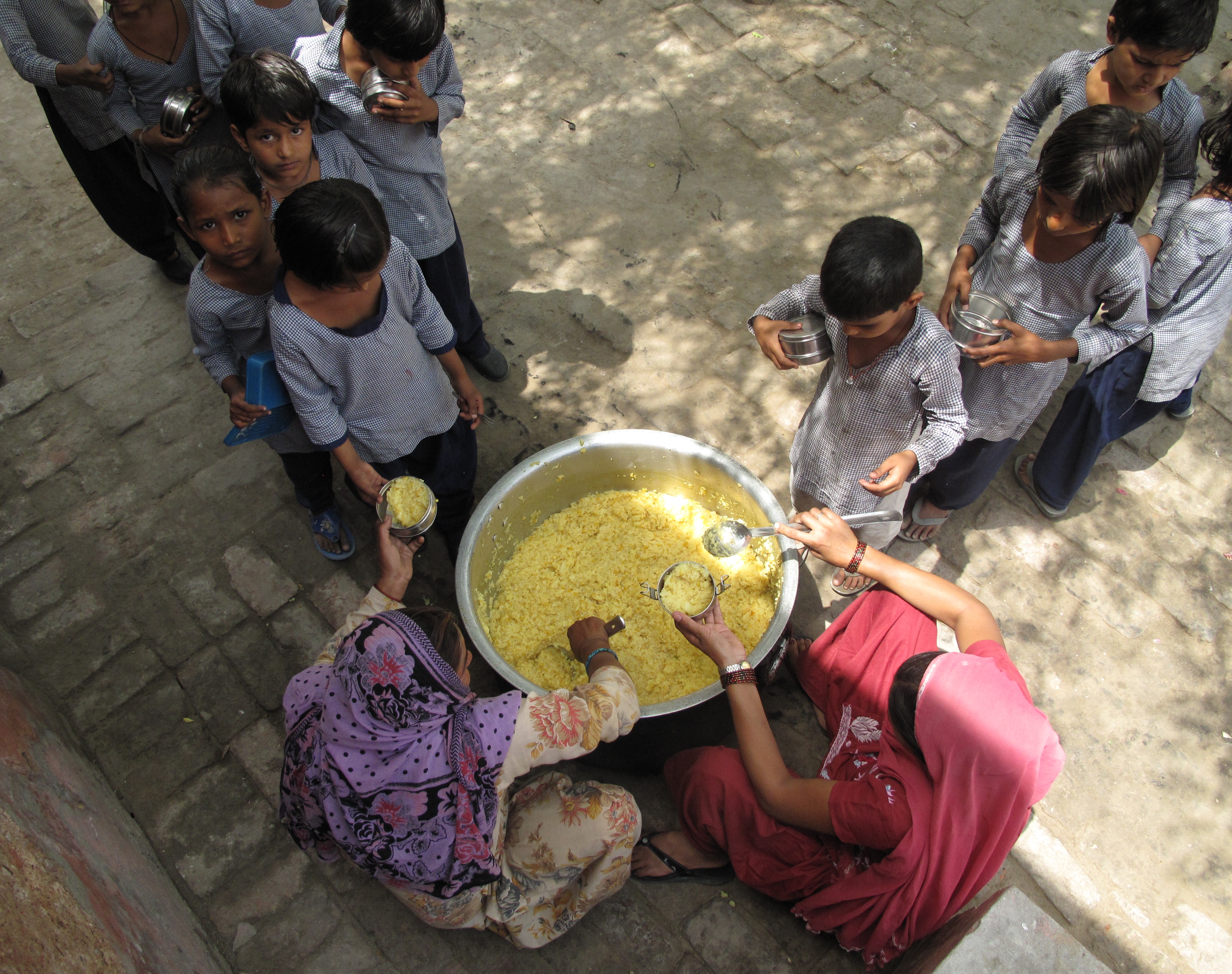Lesson Plan September 29, 2015
Power Lunch: India's Mid-day Meal Program
Country:
Grades:
Questions for “India: Here’s Why Kids – and Parents – Love the Country’s School Lunch Program”
- What is the size and scope of the national lunch program?
- What are its goals?
- How many different kinds of successes in these goals does the article mention?
- In what areas has the program run into controversy or difficulties?
- How many different voices or perspectives has the author included? What does each contribute? (Compare to your Circle of Viewpoints entry work.)
- Look again at the first two sentences of the article. What do you notice about this beginning? What might this suggest about the structure the author feels essential to the piece?
Questions for "Power Lunch: India's Mid-Day Meal Program"
Questions for first viewing:
- Note 10 visual details that struck you in this film.
Questions for second viewing:
- In what ways is this film a story, narrative? OR How many different stories does the film animate, bring alive?
- Can you identify the arc of the “plot” for each of these mini narratives?
- Can you identify a visual effect that captures the rhetorical device Chatterjee uses in her first two sentences? [the split screen]
- In what ways does this convey the central points of the story?
Questions for “Meet the Journalist: Mathilde Dratwa”
- Dratwa notes the “patterned world” she is trying to convey by means of various patterns throughout her animated short. How many visual patterns can you identify?
- What other repetitions do these visual patterns reinforce in the story?
- Dratwa notes particularly the idea of “nuance” in the story. In what visual ways does she convey “both [specific] detail and flexibility” to make visible all the various complexities in the narrative?
- Pattern and nuance may seem contradictory! How does Dratwa explain her choice of animation to reconcile these ideas and use them to build a deeper meaning?
Objectives:
Students will be able to practice close observation and collaborative reflection, to identify key ideas as well as supporting detail, to evaluate the choices made by writers, artists and producers of two different kinds of media, and to evaluate the impact of these decisions.
Essential Questions:
- What are the complexities involved in a seemingly simple story?
- How do choices in form reflect and affect the telling of a story?
Materials:
Resource 1: Written reporting/article: "A Free Meal: India's School Lunch Program" (intro text) with "India: Here's Why Kids – and Parents – Love the Country's School Lunch Program"
Resource 2: Video animated film: "Power Lunch: India's Mid-Day Meal Program"
Resource 3: Video interview "Meet the Journalist: Mathilde Dratwa"
Additional related articles by Chatterjee
Warm up Activity:
Chalk Talk (in small rotating groups, one easel sheet or chalk board per question):
- What are your assumptions or what seems simple in the idea of a midday meal (lunch)?
- What cultural or family customs do you know about in relation to a midday meal? (Consider different kinds of midday meals during weekdays or holidays, previous generations or living routines compared to modern habits, etc)
- What do you know about the history/philosophy behind any school-provided lunch programs in your state/country? (Add any "lunch headlines" in the recent news that you might be aware of.)
Depending on your time allotment, have groups present what struck them or surprised them in the accumulated written responses AND/OR discuss as an entire class. Based on this discussion, assemble together the following visual representation:
Circle of Viewpoints:
Identify constituencies and impacts: If there were to be no lunch provided in your school or in a school that currently has such a program, how might this make things different? Who might be affected – and in what ways?
[Keep all of these various materials visible for the duration of the project.]
Introducing the Lesson:
We will be reading articles by Rhitu Chatterjee, a New Delhi-based journalist, and viewing a short video produced by journalist Mathilde Dratwa created to accompany the text. Begin with Chatterjee's article, Resource 1, "India's Mid-Day Meal Program" introductory text and the article "India: Here's Why Kids – and Parents – Love the Country's School Lunch Program." We will then continue to Dratwa's animated short, "Power Lunch: India's Mid-Day Meal Program," Resource 2. As a third resource, we will look at and listen to an interview with the filmmaker, "Meet the Journalist: Mathilde Dratwa," as we consider new questions about form and content. (Additional related resources are also noted.)
Article Analysis:
Read Resource 1: "India's Mid-Day Meal Program" introductory text and the article "India: Here's Why Kids – and Parents – Love the Country's School Lunch Program." See related questions below for written work and/or group discussion.
If the questions serve as individual home or class work, create together in class a group visual of the answers for the entire class to look at. You might preface this chart work by working "backward": beginning with question #6 read together the first two sentences and have students identify the rhetorical technique the author sets up. You might then pose the query, "How would you show this [contrast] and the examples you found as your answers to question #7 in visual form?" You will then have a visual comparison to the entry point work in the warm up, the Circle of Viewpoints.
Introduce the video: What might be important to capture in another rendition of these ideas in visual form? We will now be looking at an animated short video produced by the journalist Mathilde Dratwa to accompany this article.
* Note that students will be watching the video several times, each time with a round of questions.
*Depending on your students, you may want to note with older grades that the form of the video will be a particular focus; they should be careful not to assume the animation suggests or is fitting to lower age levels.
Watch Resource 2: "Power Lunch: India's Mid-Day Meal Program." See related questions below (in two rounds).
*You may want to introduce the first round by telling students to jot down 10 visual details that catch their eye the first time through. At the conclusion of the first viewing, gather and list all these details. Ask the students whether they see any groupings, any connections to ideas they have noted in the Chatterjee article.
Watch Resource 2 a second time. See related questions for Round 2; use for class discussion.
Read Resource 3: "Meet the Journalist: Mathilde Dratwa"
Introduce this interview with the artist. Note that students will be listening for her discussion of the form, her choices of visual elements. You might want to define the word "nuance" in advance and have that on a board; the same might be true of the concept of "holding two ideas in your mind at once," if younger students have not yet identified or worked with this idea.
After an initial viewing, use the questions below for a discussion. You may want to return to the interview as you go or after the discussion.
Reflection:
Have students write in answer to these questions individually and anonymously, then share around and post.
- What common threads (no pun intended!) did you note through the course of these lessons?
- What details opened your eyes to new or different ideas?
- What new questions arise for you that you want to pursue?
A final assignment would be to read all the postings and write a short reflection on the structure of the lessons themselves.
Students might also assemble the range of new questions and select a means of exploring them (research, creative or expository writing, dramatic enactment, annotated visual art or any of the alternate ideas below.
Extensions:
- Supplement the texts, during the first reading segment or as a later complementary assignment, with Chatterjee's other articles on this story.
- Write an essay comparing or contrasting Chatterjee's sensory descriptive language in Resource #1 with the video. Which presentation is more evocative for you and why?
- Explore other meanings in "pattern": research textile patterns and meaning (in India and around the world). A particularly rich resource might be West African proverb cloth. Create an original textile pattern, accompanied by an essay explaining its significance.
- Create your own short video clip, animated or other, in which you make clear at least two different perspectives on a topic of complexity. (Younger students might create a single cel or storyboard.) Accompany the visual with a written explanation of your artistic choices.
How do content and form work together in telling a story in the news? Contains 3-5 lessons and is intended for grade levels 8-12. This unit/lesson builds on thinking routines developed by Project Zero at Harvard University.
This lesson plan contains notes both for students and the facilitator.
REPORTING FEATURED IN THIS LESSON PLAN
-
 English
EnglishEducation Resource
Meet the Journalist: Mathilde Dratwa
Mathilde Dratwa discusses what attracted her to Rhitu Chatterjee's reporting on India's...
-
×
 English
English -
×
 English
English -
 English
EnglishIndia’s Midday Meal program feeds 120 million poor and malnourished children. Despite rampant...










